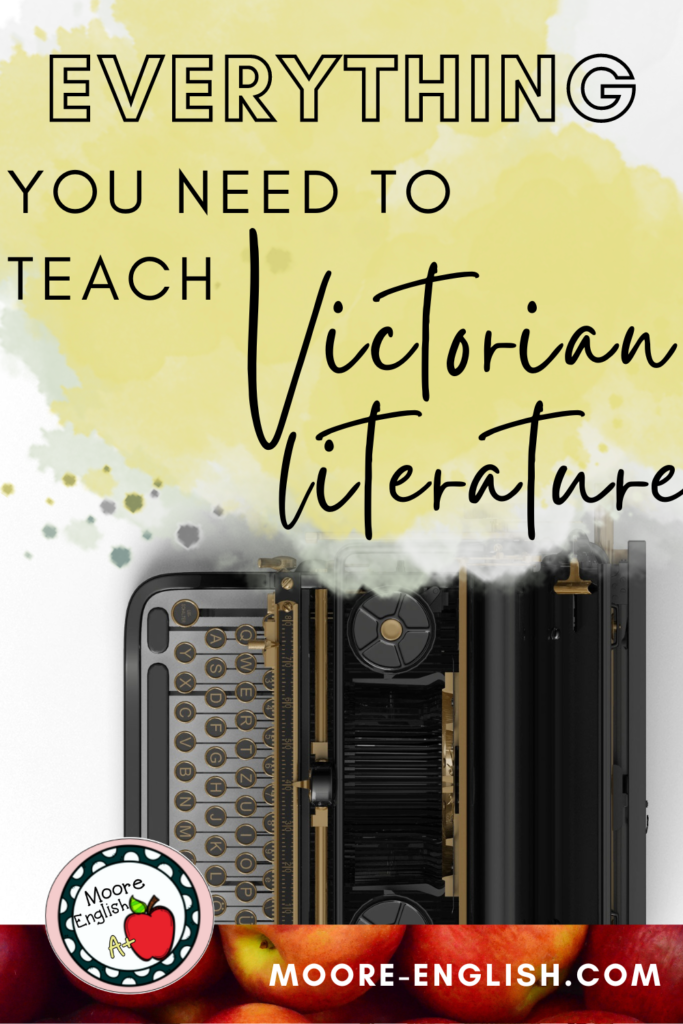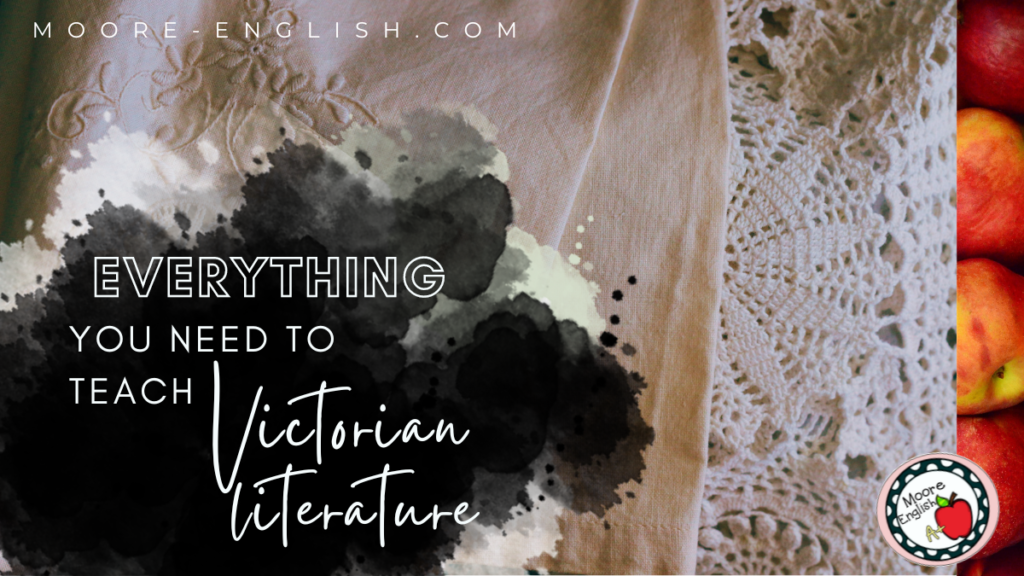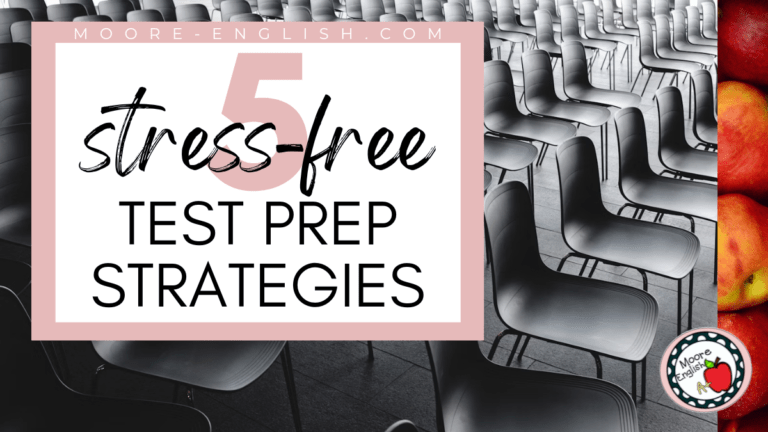Helping high school students understand Victorian literature can be tricky. As much as my students love Harry Styles, it’s tough to get them excited about a British literary movement from more than one-hundred years ago.
Knowing that it will be challenging to get students excited, I try to structure our study of Victorian literature around a few essential questions. At my school, this instructional spiral would fit into twelfth grade.
- Firstly, what does social justice look like?
- Secondly, how can literature become a force for change?
- Next, are readers obligated to empathize with literature?
- Overall, what is the best way for a society to grow and evolve?
This post this post may contain affiliate links. Please read the Terms of Use.
Introducing Victorian Literature
When introducing Victorian literature, it’s important to help students understand the historical context. Here are a few strategies to consider:
- Build a classroom timeline to visualize the historical context.
- Use the essential questions to create an anticipation guide or question trail
- If you’re pressed for time, this activity is a quick way to help students understand the role of class in Victorian literature.
- Ask students to complete some research about key historical events and figures. This set of free scaffolded notes will help students keep track of their research.
After establishing the historical context, it’s helpful to start students with a non-threatening text. These two suggestions are a good way to set the table for a study of Victorian literature:
- First, “Invictus” by William Ernest Henley is a high-interest and brief poem. It’s unreal the number of students who have come back after graduation to show me their tattoos inspired by this poem. Read it here.
- By the time students are seniors, they have often read “Invictus.” When this happens, “If–” by Rudyard Kipling also makes a good introductory poem. While “If–” is longer, the tone is so warm and positive that it also engages students. Read it here.
Spiraling Upward with Greater Complexity
As students become more adept with Victorian literature, I raise the bar in terms of text complexity. To help students understand the political situation and outlook of the Victorian Era, I’d suggest “The Charge of the Light Brigade” by Alfred, Lord Tennyson. While the repetition in the poem gives it the appearance of glory, it’s really a poem about failure and duty. Read it here.
In “The Charge of the Light Brigade,” the military fails its soldiers. In Victorian society, the government also failed its citizens. To help students understand the class struggles associated with the Victorian Era, I’d suggest “The Last of the Light Brigade” by Rudyard Kipling. In this poem, the survivors of the Light Brigade, aging and struggling to find work, visit Alfred, Lord Tennyson. In many ways, this is a heartbreaking poem. Read it here.
Aging is also the topic of “Ulysses” by Alfred, Lord Tennyson. Since this is such a long poem, I don’t usually teach the entire text. However, this poem does a good job helping students explore the Victorian interest in the ancient past. Read it here.
Discussing the Influence of Romanticism
Victorian literature, like most literary movements, responds and reacts to previous literary movements. In this case, the influence of Romanticism looms large in Victorian literature. Some Victorian writers turn from Romanticism and reject its tropes while other writers extend and expand upon the work of Romanticism.
My favorite poet, Gerard Manley Hopkins, is an interesting case. At times, the language of his writing seems to echo the Romantic interest in imagination. For example, the beautiful language of “God’s Grandeur” shows this influence. However, this poem also turns against Romanticism by venerating God rather than the individual spirit. In other words, this is a great poem for engaging students in a conversation about the relationship between literary periods. Read it here.
Hopkins is also known for his experimental style. In many ways, his experiments with form, stress, and meter predicts literary modernism. This is clear in my favorite poem “Spring and Fall: To a Young Child.” The tone of this poem better matches with Victorian literature, but his interpretation of religious images and his riff on sonnet form predicts modernism. Read it here.
Longer Pieces of Victorian Literature
My first year of teaching, I used “Dover Beach” with my seniors and was stunned when they didn’t get it. In retrospect, I should have spent more time scaffolding students upward to such a long text. This is also a poem with an unusual structure. Plus, the conclusion features significant deliberate ambiguity. If I were to teach this poem today, it would appear at the end of a unit on Victorian literature. “Dover Beach” connects to many of the essential questions. Its conclusion also resonates with some events in the contemporary world. Read it here.
While I have taught Pride and Prejudice more often, my favorite Jane Austen novel is actually Northanger Abbey. I love Austen’s satire of Gothic novels and pulp fiction. To help students analyze the role of satire in Victorian literature, I sometimes pair excerpts from Northanger Abbey and Wuthering Heights. It’s a happy coincidence that the female leads share the name Catherine. Comparing and contrasting Catherine Moreland and Cathy Earnshaw usually leads to an interesting conversation. Grab this activity today!
Finally, Pride and Prejudice may be the ultimate British novel for the high school classroom. Austen’s novel touches on each of the essential questions, engages students with its humor, and leads to great classroom discussions. To make this novel accessible to students, consider some of these activities:
- Using an anticipation guide
- Comparing the different marriages
- Writing journals to connect to the text
- Using stations to generate literary analysis
- Evaluating the impact of Jane Austen’s life on the text
- Reviewing irony and direct and indirect characterization
- Using task cards to analyze character and figurative language
Grab most of these resources in my Victorian Literature Bundle today!


















